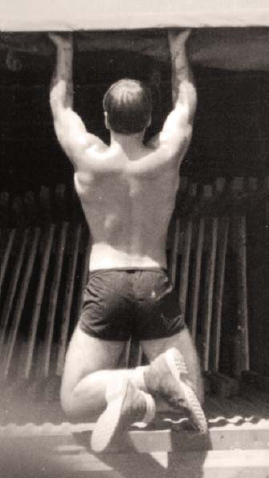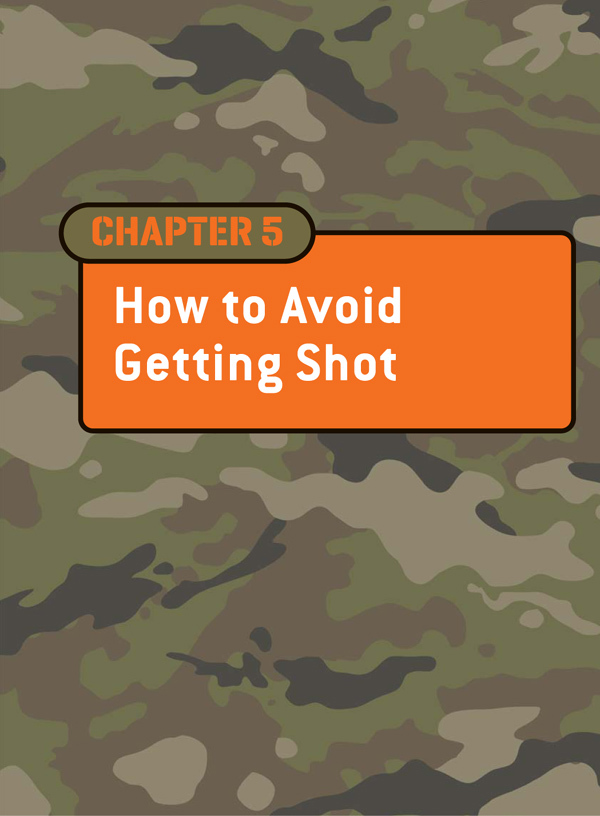Elephant are smart and don’t look for trouble unless they are males and it is breeding season – when they go a bit crazy like some Airborne types I know. If you bump into them they will generally walk off after a bit of a song and dance. Hippos can be very nasty in the water as they protect their territory. But out of the water they are about the same as rhino – bad tempered but hassling you is too much trouble unless you really piss them off.
Water buffalo are no trouble but African plains buffalo are the most dangerous creature on earth. If you shoot one or two they will keep coming until they overwhelm you. If you climb a tree they will wait around the bottom until you fall out of it. Leave them well alone. Many years ago a civilian friend of mine was working in finance in East Africa. He was out on some sort of safari and a buffalo attacked him. It managed to hook one of its horns in his arse-hole and swing him about a bit like a balloon on a stick. Did him no good at all.
FITNESS FOR BATTLE
Many people think, because there is such an emphasis on fitness in the training of soldiers, that fitness and athletic performance are all-important components of a soldier’s efficiency.
The truth, as is so often the case, is a little more complicated than that.
Keeping a clear head
As you will gather from elsewhere in this book, and personal experience when you get it, soldiering is mostly about endless walking carrying heavy kit. Perhaps less so with the increasing use of Armoured Personnel Carriers (APCs) for infantry but when you have to patrol in town or country, and especially as Special Forces, your soldiering has to be done on foot at least some of the time.
It doesn’t take a great deal of fitness to do a four-hour patrol on a spring day but it does in the desert sun. And the thing is, any insurgent worth the name will know to hit you when you are on the last half hour of your patrol. Just like they try to hit you in the last days of a tour. If you are not fit by the end of a patrol your concentration will be ebbing and your reactions will be slow. This will get you or your mates killed.
So, the purpose of general fitness in a combat soldier is not just the ability to make the occasional mad dash to engage the enemy or the skirmish forward that happens in conventional warfare now and again, it is the ability to keep a clear head and rapid reaction time after hard work – ready for anything exciting that happens wherever you happen to be.
Training
The last thing you want in a soldier is to be over weight. A fat soldier cannot do his job; firstly because he probably can’t carry his body plus his kit the necessary miles but also because part way through the patrol he will become dizzy with exhaustion and switch off. This inability to stay alert and spot potential trouble makes him a liability to himself and to his mates.
The next worst thing is a bulked-up, muscle-bound soldier. Yes, really, despite what you see on the TV! This is because muscle is great for looking tough in movies and lifting heavy weights but it is a real drag on the heart when you have to run or walk long distances. You don’t get any benefit from big biceps when you are running but they constitute extra weight to carry and, worst of all, your heart has to feed them with oxygenated blood which detracts from what is available to power your legs. What you want is to be slim and fast. A soldier should look like a marathon runner; and all long distance runners are thin.
Test of willpower
Elite units and Special Forces often have a selection procedure which involves either extreme standards of fitness or, and this is slightly different, the requirement to cover great distances on foot, carrying weight in a pack.
TOP TIP!
Training gets boring after a while so I suggest you play football, basketball or similar for fitness and do long marches several times a week for stamina. I personally used to box as an incentive to fitness. This is a great motivator as if you are not fit in the ring you get hit a lot.
Very high standards of fitness tend to be one of the factors which increase aggression in young men. This is just what is wanted in a force like the British Parachute Regiment or the US Airborne and the leadership has to put up with a certain amount of exuberance. Fighting in bars and so forth.
Covering great distances on foot day after day while carrying a heavy pack does require fitness but not extremely so. What it does call for in large amounts is will power – the mindset that keeps a man going when he is tired and blistered. Through experience it has been found in the British Army, and the SAS in particular, that a man who will keep himself going when his body has had enough is the sort of man who, without the support of comrades or an officer to tell him what to do, will keep going and accomplish his mission.
To give you an idea of what is required, consecutive daily SAS selection marches are in the 20+ mile range, testing marches are 30 to 40 miles and we once did a march of 65 miles, over mountains at night and carrying 65lb packs in 14 hours and 20 minutes.

Tom doing the ‘Fan Dance’ carrying a GPMG: all British Special Forces soldiers climb Pen Y Fan as part of an endurance march. For decades the Fan Dance has been a crucial part of SAS selection. Part of the Brecon Beacons and the highest mountain in South Wales, Pen Y Fan feels higher than it actually is when you are carrying a 44lb Bergen and rifle. As recently as 2011 a recruit died just 700m from the finish line during the selection process. (Photo courtesy Tom Blakey)
Shin splints
Some soldiers are more prone to ‘shin splints’ or ‘stress fractures’ in the lower leg than others. What happens is that continual running over months or years, in boots particularly, and on hard surfaces such as concrete or asphalt causes a crack to appear in the shin bone by the constant shock of the heel hitting the ground.

The Author – way too heavy for an infantry soldier. (Author’s Collection)
I used to get this as a recurring problem and the medics experimented on me with heat induction to speed healing. Maybe there is something clever they can do nowadays but the best thing is not to get a splint in the first place. In the ‘old days’ we always had to run in boots. And there was no ‘give’ or spring in the heel. What you want is to run in trainers with cushioned heels and march in boots. Don’t worry too much about shin splints – I had to run 12 miles and Tab 12 miles every day for years to get them. In any event, it’s only pain.
What to do?
To make your soldiering easier, keep your weight down and your fitness high. The best way is to make training interesting by playing aerobic team games such as football/soccer, basketball or similar. And keep away from the weights.

In some respects you might consider this to be the most important section of this book.
The idea of following the occupation of a Special Forces soldier, indeed any soldier, is not to be a dead hero, survive awful wounds in the pursuit of your duty or even win a hatful of medals; it is to stay alive and healthy while completing your mission – be that keeping the peace or fighting a full-on war.
The trouble is, while you are completing your mission – be that protecting a food convoy or attacking an enemy base – the enemy is going to be trying his damned best to kill you just the same as you are trying to kill him. And the thing is, no one is totally bulletproof, so the best thing you can do to stay alive in combat is tilt the odds in your favour by fitness, skill and following good SOPs. Pretty much everything you learn in training and perform in the field is to stop you getting shot or blown up so there are many other things you can do too, but I think by listing some of the principles in this section it will help them stick in your mind, and maybe that will stop you getting shrapnel stuck in your butt. In principle, you can achieve the worthy aim of keeping your skin intact by one of three methods: